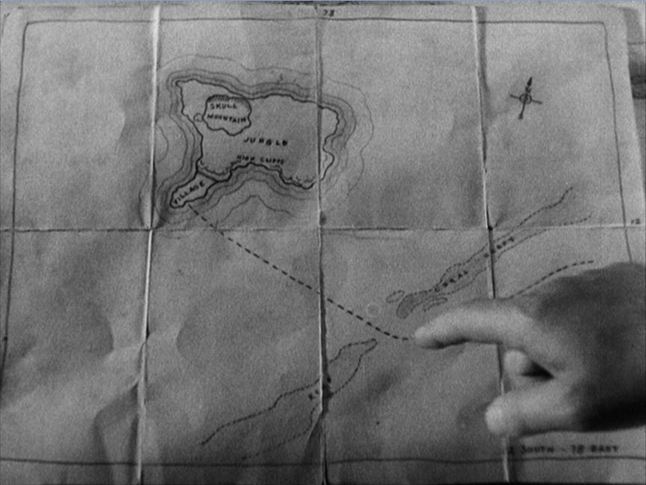Joseph Andriano, Immortal Monster: the Mythological Evolution of the Fantastic Beast in Modern Fiction and Film (Westport CT: Greenwood Press, 1999), p.46.
|
‘Like Moby- Dick, whose ribbed brow mirrored Ahab's, King Kong is an image both of the Other (specifically — depending on the sensibility of the perceiver — gorilla, ape-man, black male) and of the Self (our generic self as Hominid). Carl Denham in many ways resembles Ahab, moreover, when Denham finally "spill[s] it" about the nature and destination of the secret voyage, he says of Kong's Island, "you won't find that island on any chart.” Like Queequeg's home, "true places never are" on any map. But this one must be just off the map, at the edge of what is known, where there be dragons. Seelye assumes that the dinosaurs are the only dragons here as Kong ironically becomes the chivalrous knight defending the damsel Ann Darrow from the dragon tyrannosaurus. Noël Carroll, on the other hand, dismisses the dragon completely from the mythical architecture of the film: he claims that "Kong is not even peripherally a dragon story. The reason is simple; dinosaurs do not belong to the same symbolic species as dragons". Dinosaurs, he claims, are not "fusion figures" as dragons are. Once we realize that King Kong is a retelling of the Andromeda myth we see how both these readers are wrong. Kong is a dragon become an ape.’
Joseph Andriano, Immortal Monster: the Mythological Evolution of the Fantastic Beast in Modern Fiction and Film (Westport CT: Greenwood Press, 1999), p.46.
0 Comments
Your comment will be posted after it is approved.
Leave a Reply. |
|
